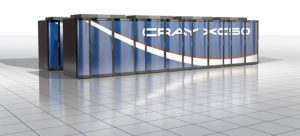 Today Cray announced that the National Institutes for Quantum and Radiological Science and Technology (QST) selected a Cray XC50 supercomputer to be its new flagship supercomputing system. The new system is expected to deliver peak performance of over 4 petaflops, an increase of more than 2 times the system it is replacing. It will support QST in powering complex calculations for plasma physics (turbulence, edge physics, integrated modeling) and fusion technology, and will be the largest supercomputer used specifically for nuclear fusion science in Japan.
Today Cray announced that the National Institutes for Quantum and Radiological Science and Technology (QST) selected a Cray XC50 supercomputer to be its new flagship supercomputing system. The new system is expected to deliver peak performance of over 4 petaflops, an increase of more than 2 times the system it is replacing. It will support QST in powering complex calculations for plasma physics (turbulence, edge physics, integrated modeling) and fusion technology, and will be the largest supercomputer used specifically for nuclear fusion science in Japan.
We’re looking forward to delivering a supercomputer for QST that will further the Institute’s work in discovering opportunities for fusion power as a reliable energy source,” said Mamoru Nakano, president of Cray Japan. “The speed and integrated software environment of the Cray XC50 will enhance QST’s infrastructure and allow researchers to speed time to discovery.”
The Cray XC50 supercomputer will be installed at the Rokkasho Fusion Institute in Japan. The Cray supercomputer will replace Helios, the Institute’s prior supercomputer used for the Broader Approach project between the European Atomic Energy Community (Euratom) and Japan. The supercomputer will accelerate the realization of fusion energy through R&D and advanced technologies project and will complement the ITER project, a worldwide collaboration designed to demonstrate the scientific feasibility of fusion power as an environmentally responsible energy source.
QST will be providing more than 1,000 European and Japanese fusion researchers with the high-performance computing technology required to advance game-changing research in fusion power. The Cray system will provide the performance and scale necessary to support QST researchers in running complex plasma calculations as part of the ITER project.

Cray XC50
The Cray XC series of supercomputers are designed to handle the most challenging workloads requiring sustained multi-petaflop performance. The Cray XC supercomputers incorporate the Aries high-performance network interconnect for low latency and scalable global bandwidth, the HPC-optimized Cray Linux Environment, the Cray programming environment consisting of powerful tools for application developers, as well as the latest Intel processors and NVIDIA GPU accelerators. The Cray XC supercomputers deliver on Cray’s commitment to performance supercomputing with an architecture and tightly-integrated software environment that provides extreme scalability and sustained performance.
The Cray system is expected to be put into production in 2018.




